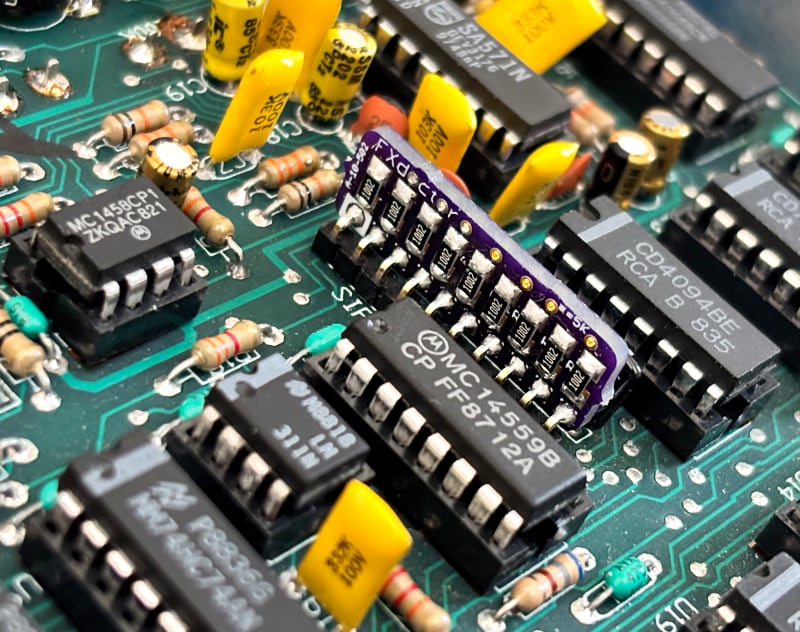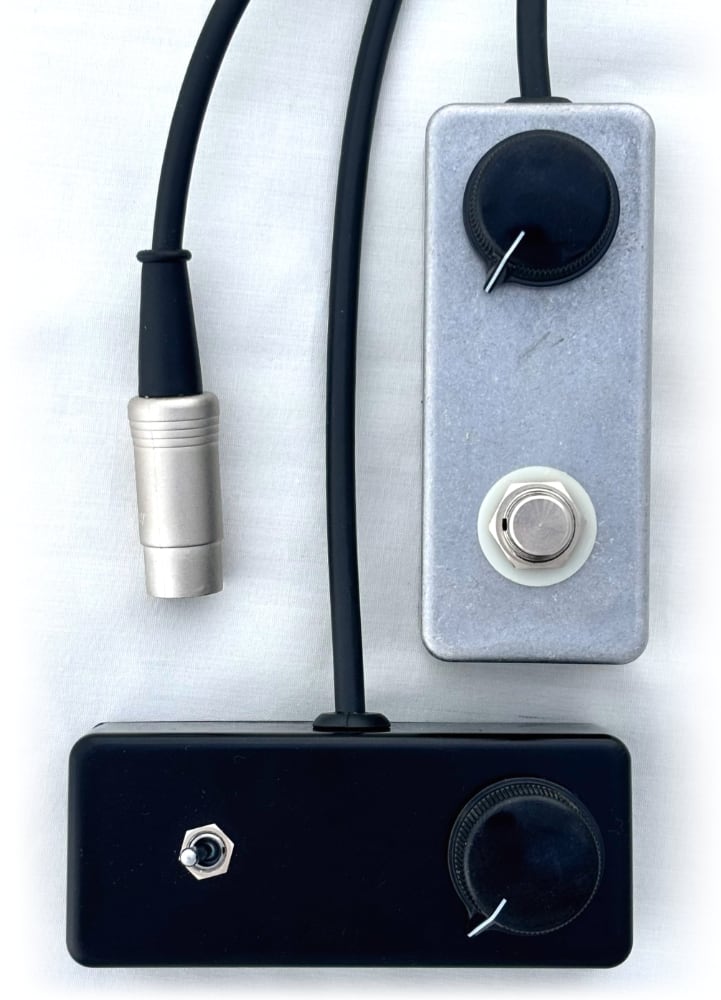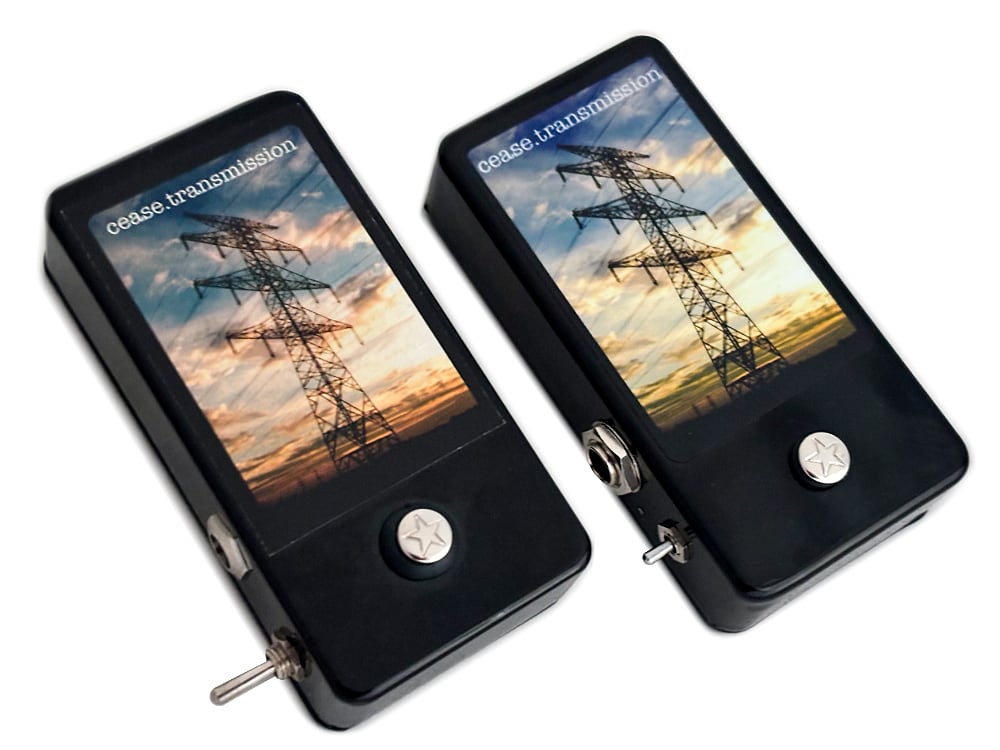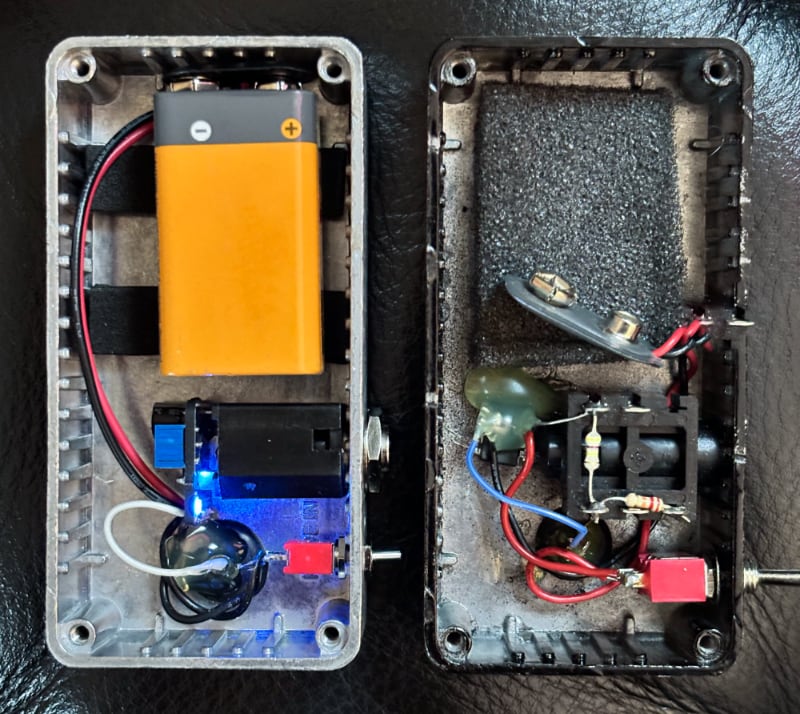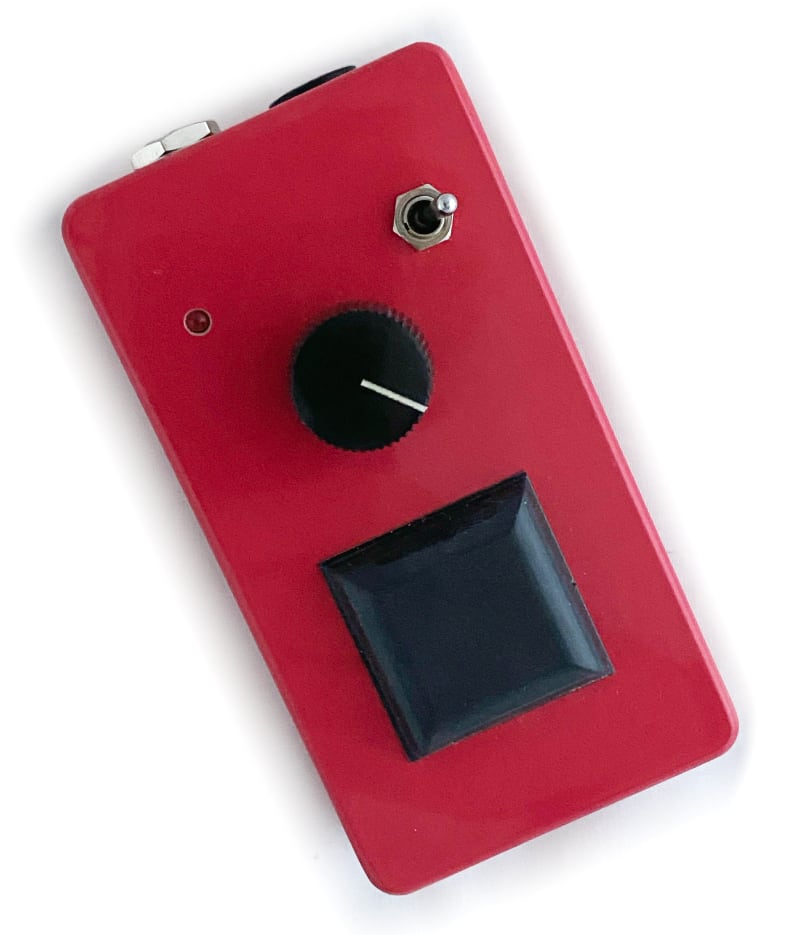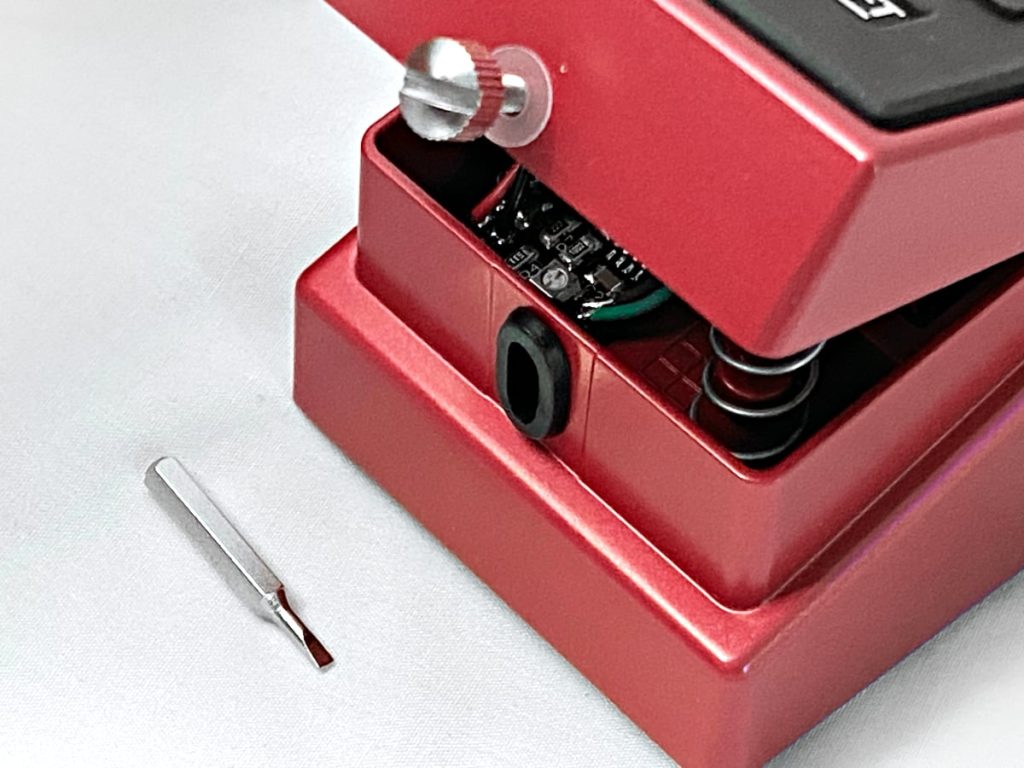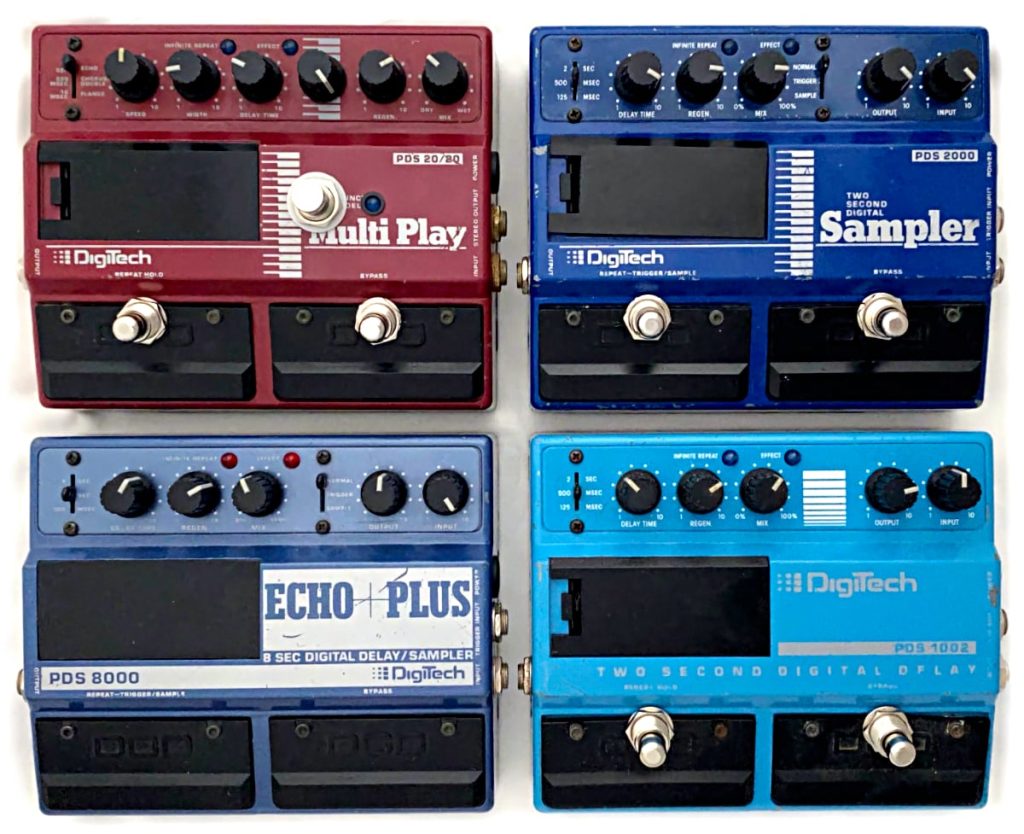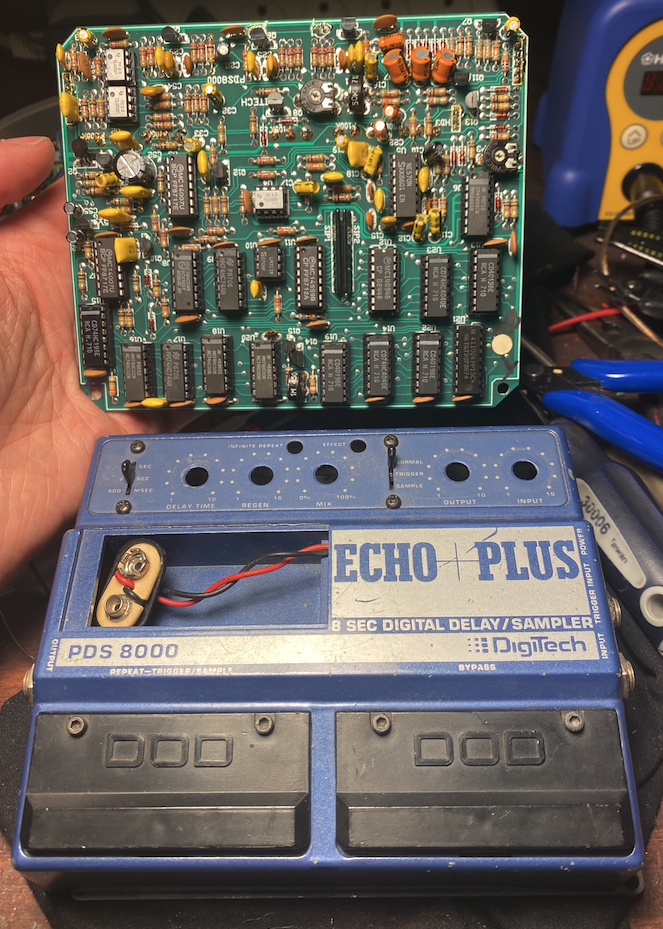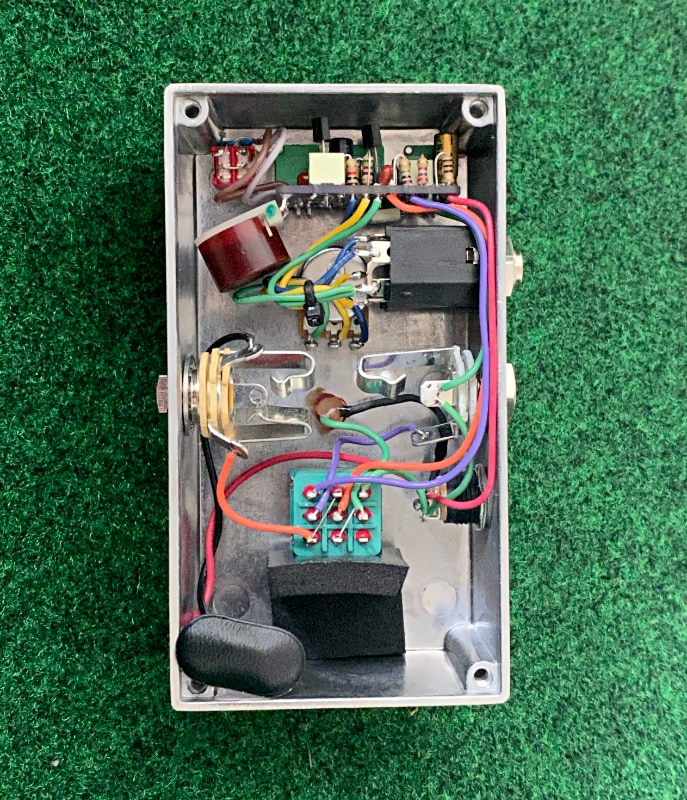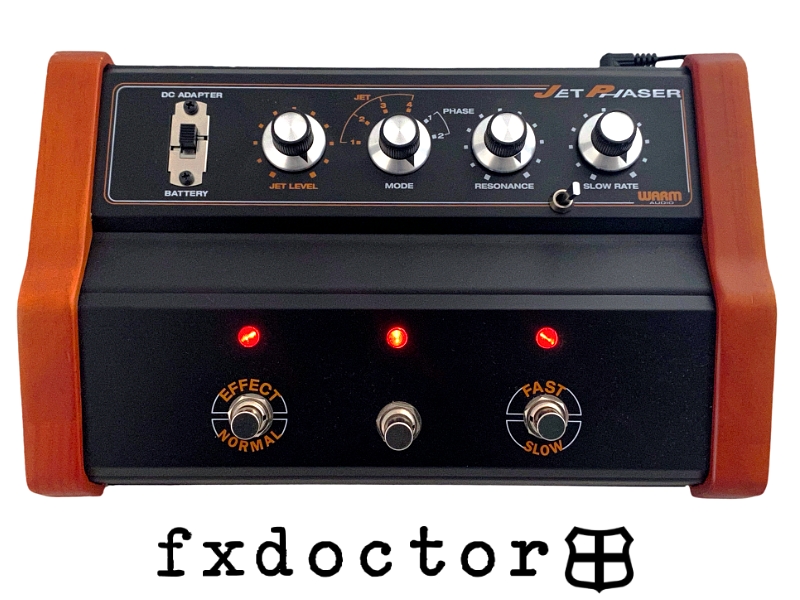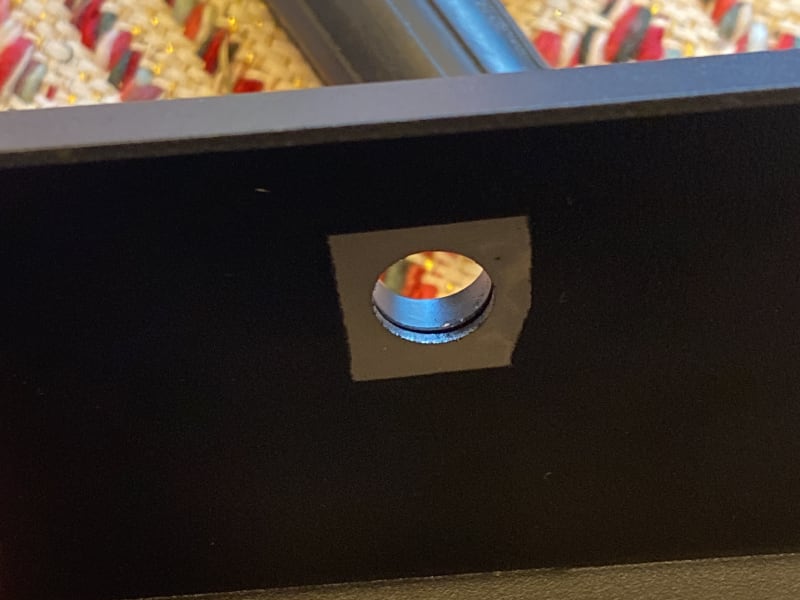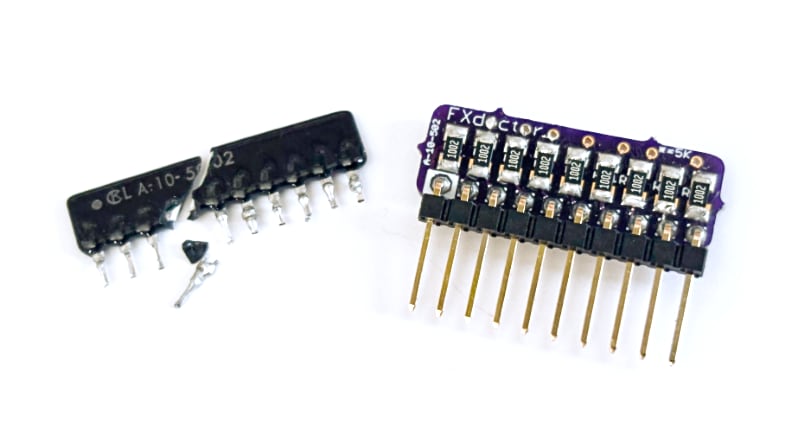
The Digitech PDS series is the most common pedal that we see in for modifications and a recent one came in with a mystery distortion on the delayed signal. After a closer inspection we found the LA-10-502 resistor network was physically cracked and needed to be replaced. Unfortunately this part is long out of production and even a modern equivalent was difficult to find in a SIP package.

This part is a network of resistors combined into one package used in conjunction with some chips to convert the analog signal to digital and back again to analog. Since there’s a good amount of space available inside of the pedal we were able to build our own direct replacement for this part to repair the pedal and have available for future repairs.

Above is a close-up of the chip showing that there was no saving it. Below we can see the replacement installed and working as expected. It’s a bit taller than the original and could be mounted closer to the PCB if needed but the PDS circuit board had plenty of clearance between components allowing us to build a PCB that’s easy to assemble and install.
